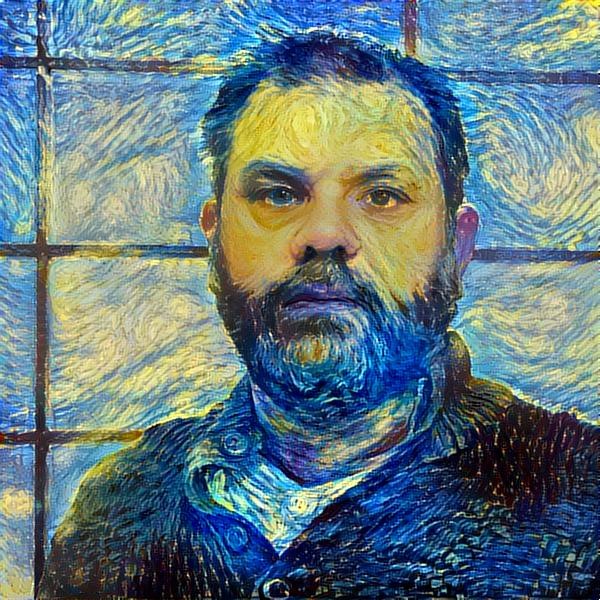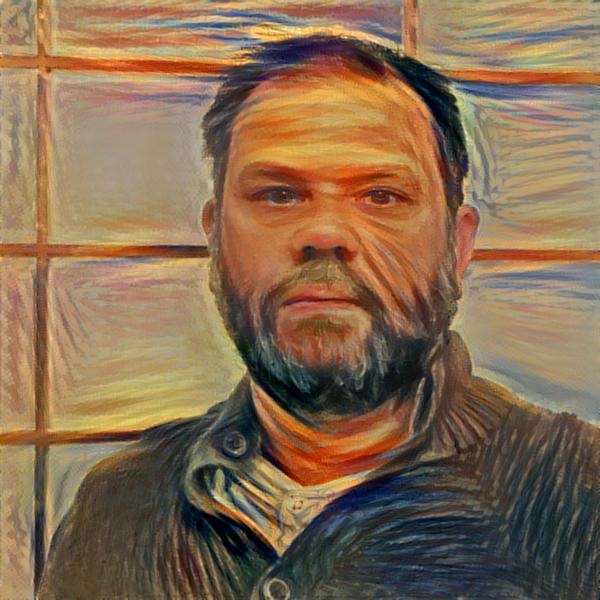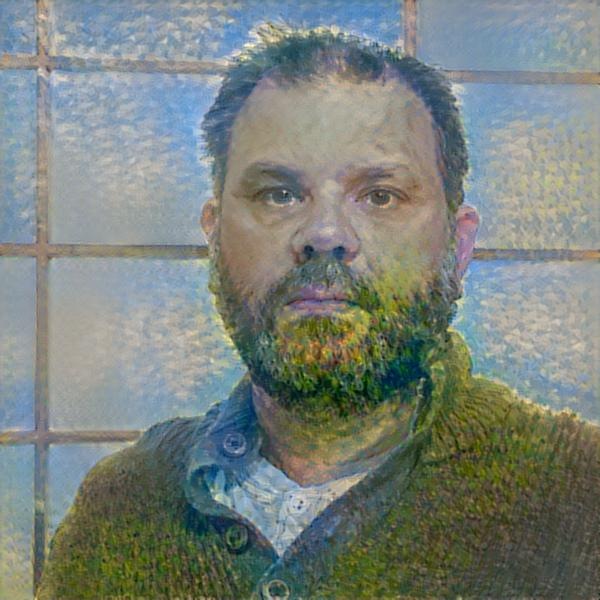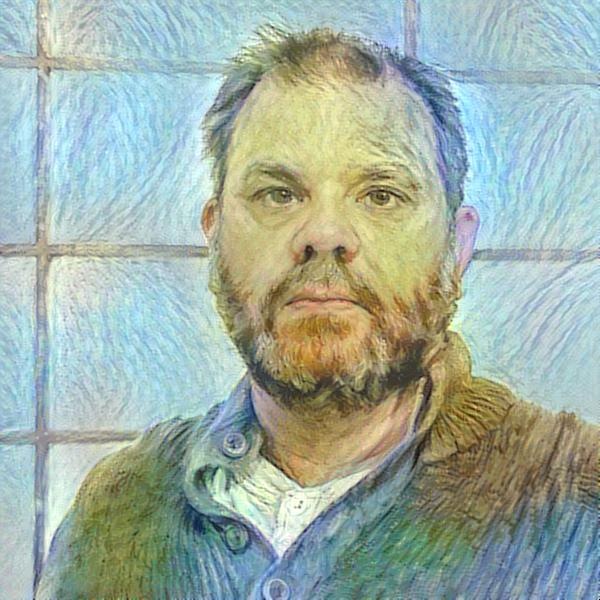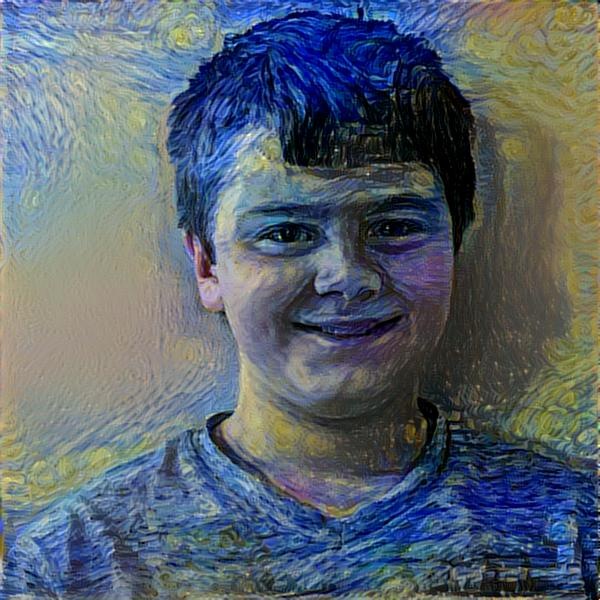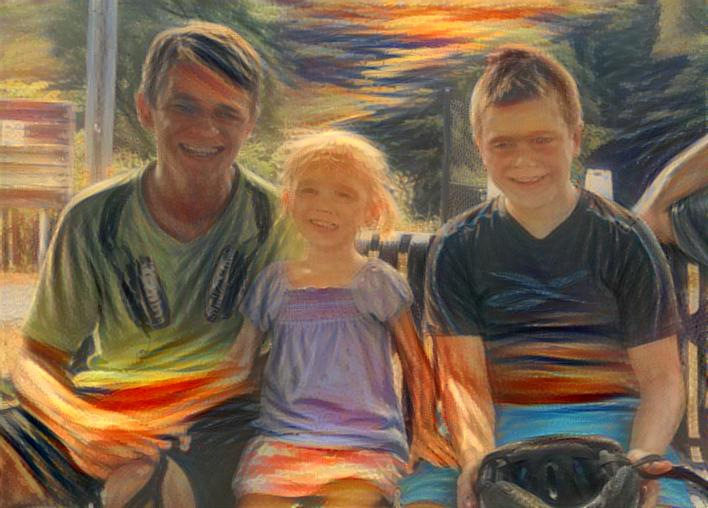Hunter's Portrait
Inspired by our trip to the National Portrait Gallery, we started thinking to ourselves, what's so impressive about making our robot's paint like a famous artist. Sure they are inspirational and a lot can be learned from them, but when you think about it, people are more interested in the art of their loved ones.
So this morning, Hunter and I decided to do quick portraits of each other and then run the portraits through deep neural nets to see how well they applied to a photo we took of each other. As soon as we started, Corinne joined in so here is obligatory photo of her helping out.
Also in the above photo you can see my abstract portrait in progress.
Below you can see the finished paintings and how they were applied to the photos we took. If you have been following this blog recently, you will know that the images along the top are the source images from which style is taken and applied to the photos on the left. This is all being done via Style Transfer and TensorFlow. Also I should note that the painting on left is mine, while Hunter's is on right.
Most interesting thing about all this is that the creative agent remains Hunter and I, but still something is going on here. For example even though we were the creative agents, we drew some of our stylistic inspiration from other artist's paintings that we saw at the National Portrait Gallery yesterday. Couldn't a robot do something similar?
More work to be done.
Applying Style Transfer to Portraits
Hunter and I have been focusing on reverse engineering the three most famous paintings according to Google as well as a hand selected piece from the National Gallery. These art works are The Mona Lisa, The Starry Night, The Scream, and Woman With A Parasol.
We also just recently got Style Transfer working on our own Tensor Flow system. So naturally we decided to take a moment to see how a neural net would paint using the four paintings we selected plus a second work by Van Gogh, his Self-Portrait (1889).
Below is a grid of the results. Across the top are the images from which style was transferred, and down the side are the images the styles were applied to. (Once again a special thanks to deepdreamgenerator.com for letting us borrow some of their processing power to get all these done.)
It is interesting to see where the algorithm did well and where it did little more than transfer the color and texture. A good example of where it did well can be seen in the last column. Notice how the composition of the source style and the portrait it is being applied to line up almost perfectly. Well as could be expected, this resulted in a good transfer of style.
As far as failure. it is easy to notice lots of limitations. Foremost, I noticed that the photo being transferred needs to be high quality for the transfer to work well. Another problem is that the algorithm has no idea what it is doing with regards to composition. For example, in The Scream style transfers, it paints a sunset across just about everyone's forehead.
We are still in processing of creating a step by step animation that will show one of the portraits having the style applied to it. It will be a little while thought cause I am running it on a computer that can only generate one frame every 30 minutes. This is super processor intensive stuff.
While processor is working on that we are going to go and see if we can't find a way to improve upon this algorithm.
Crowdsourced Self Portrait
I have done self portraits with my robot before, but this is the first crowd sourced one. Left it up for a number of days for people from around the world to work on it. Also, my youngest son did a significant amount of work on it.





















